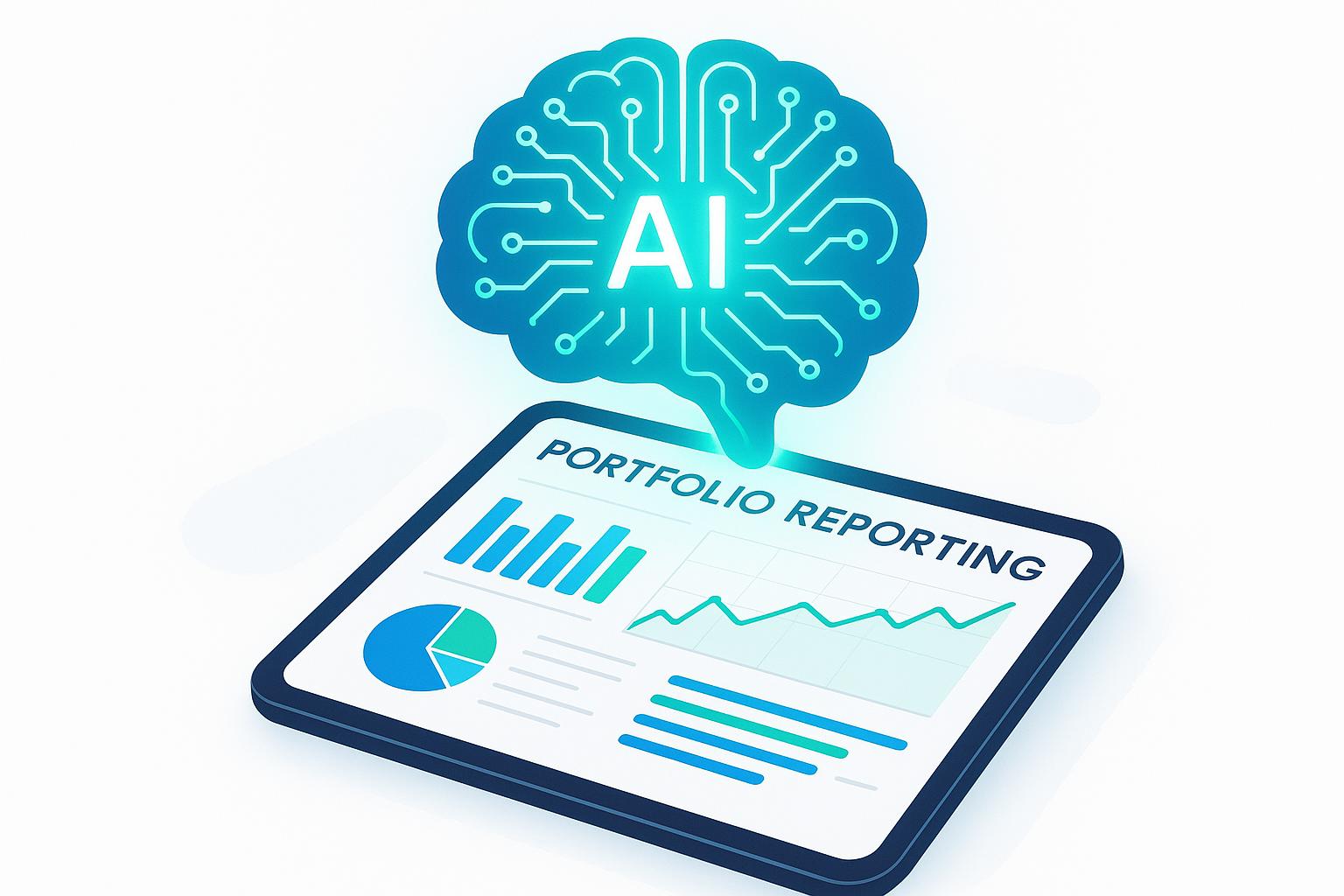Managing cash flow is no longer a guessing game. Predictive analytics, powered by AI, is changing how businesses monitor and forecast finances with precision. Here’s what you need to know:
- What It Does: Predictive analytics uses historical data and machine learning to forecast cash flow trends, helping businesses anticipate risks and opportunities.
- Why It Matters: Real-time insights allow businesses to act quickly, reducing errors by up to 50% and achieving forecast accuracy rates as high as 95%.
- Key Benefits:
- Identifies cash shortfalls and seasonal trends.
- Improves financial decision-making and reduces operational risks.
- Enables scenario planning for better preparedness.
- How It Works: Combines data from ERP systems, bank APIs, and market trends into AI models that refine predictions over time.
Businesses using these tools report faster decision-making, improved revenue growth, and reduced financial volatility. Ready to move beyond spreadsheets? Predictive analytics can provide the clarity you need to stay ahead.
Using AI in Predictive Planning - A Case Study on Cashflow
Core Components of Predictive Cash Flow Analytics
Creating a reliable predictive cash flow system involves three critical elements working together to turn raw financial data into meaningful insights, enabling smarter business decisions.
Data Integration for Real-Time Insights
The backbone of any effective predictive cash flow system is its ability to gather and analyze data from various sources. AI-driven cash flow forecasting thrives on integrating real-time data from diverse platforms, providing a complete picture of your financial health.
Key data sources include ERP systems, CRM tools, market data feeds, bank APIs, and even unstructured information like news and social media. This broad range of inputs allows predictive models to capture both internal financial trends and external market dynamics.
A successful integration strategy requires consolidating all data into a single, unified source - such as a data lake. This ensures that AI tools can process large volumes of data quickly and without inconsistencies. Prioritize systems that offer automated bank and credit card feeds for timely updates, and ensure accessibility for multiple users across different locations.
AI Models for Better Accuracy
Modern AI models, powered by techniques like neural networks and random forests, excel at analyzing extensive datasets to provide real-time, refined predictions. These algorithms adapt to changing conditions and continually learn from new data, offering increasingly accurate forecasts.
AI can identify seasonal patterns and other operational trends, delivering insights that improve financial planning. It also reduces biases, such as regional optimism, which often affect traditional forecasting methods. Businesses using AI for forecasting have reported a 20% reduction in forecast errors, and cash forecasting software can achieve accuracy rates of 90–95%. This level of precision leads to better financial decisions and lowers operational risks.
For example, an industrial equipment manufacturer faced recurring cash shortfalls in Q4 due to delayed supplier payments in Asia. By leveraging AI-powered forecasting, the treasury team identified these delays and adjusted projections, securing credit lines in advance and saving approximately $500,000 annually.
Implementing AI models requires careful consideration of model selection and performance monitoring. It's crucial that these models are transparent and interpretable, especially in regulated industries. Regular monitoring ensures the models perform effectively, while feedback loops allow continuous improvement.
These advanced models also pave the way for scenario planning, enabling businesses to simulate various financial conditions and make informed decisions.
Scenario Planning and Sensitivity Analysis
With strong data integration and precise AI modeling in place, scenario planning turns insights into strategic foresight. AI-powered tools simulate multiple financial outcomes, helping finance teams prepare for best-case, worst-case, and most-likely scenarios. This approach enables proactive liquidity management.
AI enhances scenario analysis by generating thousands of potential outcomes based on historical data and market trends. Traditional methods often rely on a handful of predefined scenarios, but AI systems can explore a broader range of possibilities, offering deeper insights into how different factors might impact cash flow.
For instance, a city government used scenario planning to predict its cash flow under three conditions: steady revenue, a 10% drop in tax revenue, and a delayed federal grant. This allowed the finance team to create contingency plans, such as postponing non-essential projects or securing short-term credit, ensuring liquidity was maintained.
To make scenario planning effective, it’s essential to regularly update and integrate scenarios into decision-making processes. Adjust scenarios as new data emerges to keep them relevant, and incorporate them into monthly or quarterly reviews to evaluate the impact of decisions or events.
Platforms like Lucid Financials offer advanced scenario planning features in their Professional and Enterprise packages, allowing businesses to model multiple financial futures and compare outcomes side by side. This shifts cash flow management from a reactive approach to a proactive strategy.
How to Set Up Real-Time Predictive Cash Flow Systems
Creating a predictive cash flow system involves three main steps: connecting your data sources, tailoring forecast models, and testing predictions to ensure accuracy.
Connecting Financial Data Sources
The backbone of any predictive cash flow system is ensuring all your financial data sources are seamlessly connected. This integration is crucial for leveraging AI and real-time insights in your cash forecasting process.
Start by defining your cash flow planning goals. Are you aiming to improve liquidity management or secure funding? Your objectives will guide which data sources are most critical. Key sources include bank accounts, ERP systems, CRM platforms, accounts receivable/payable systems, and payroll platforms. Together, they provide a complete financial picture.
Consolidating these sources into a single data lake eliminates silos, enabling faster and more consistent processing for AI-driven forecasting. Effective data mapping involves feeding internal data (like accounting software, bank statements, and transaction histories) alongside external data (such as market trends and economic indicators) into your predictive model.
Tools like Lucid Financials simplify this process by offering integrations with platforms like QuickBooks, payroll systems, and bank APIs. Their Professional and Enterprise plans automatically sync transaction data and account balances, keeping your forecasts up-to-date without manual input.
Choose a data update frequency that matches your business needs. For instance, daily or weekly updates might work best for short-term liquidity management, while strategic planning may only require monthly or quarterly updates. The key is aligning data refresh rates with the urgency of your cash flow decisions.
Once your data is integrated, the next step is customizing your forecast models to align with your business operations.
Customizing Forecast Models
With your data in place, it's time to fine-tune your forecast models to match your business's unique patterns and needs. Predictive analytics can help you create more accurate financial forecasts by factoring in historical trends, market data, and internal performance metrics.
Start by identifying the main drivers of your cash flow. Treasury teams, for example, need to focus on key factors, as statistical methods only yield meaningful results when the dataset is relevant and comprehensive.
A good approach is to begin with a pilot project. For example, one SaaS company improved its revenue forecast accuracy by 25% by integrating data from HubSpot, Stripe, and Segment. They used machine learning to identify churn risks and developed a 13-week cash flow projection for weekly planning.
Regularly monitor and adjust your models. Set up alerts for anomalies and schedule routine checks to address discrepancies. Fine-tune your assumptions as market conditions and customer behaviors evolve to keep your forecasts reliable.
Testing and Validating Models
The final step is testing your predictive models to ensure they deliver reliable results. This phase is all about building confidence in your forecasts and identifying areas for improvement before making critical decisions.
Variance analysis is essential for effective cash flow forecasting. Comparing actual cash flows against predictions helps refine your models and improve accuracy over time. Establish a testing framework that includes both best- and worst-case scenarios.
Use tools like auto-updating variance dashboards to track deviations and set alerts for significant discrepancies. Involve teams from sales, operations, and finance in the validation process. Their insights can uncover factors that might affect cash flow.
"Just by updating my rolling forecasts every Monday, I've improved accuracy by 40%. It takes me two hours, but it saves me from countless hours of stress later".
Automate alerts and conduct regular reviews to align forecasts with actual cash flows. Adjust your cash management strategies to prepare for tighter cash positions when shortfalls are projected. The goal is to ensure your system not only predicts accurately but also provides actionable insights for smarter financial decisions.
When your models are validated, you’ll be equipped to manage cash proactively and make informed decisions based on reliable insights.
sbb-itb-17e8ec9
Benefits of Predictive Analytics for Cash Flow Management
Predictive analytics brings measurable gains in forecast precision, quicker decision-making, and better risk management.
Improved Forecast Accuracy
Let’s face it - spreadsheets can be slow and prone to errors. Predictive analytics eliminates these issues by automating calculations and standardizing assumptions based on historical data.
The results speak for themselves. Companies using AI for cash forecasting report an average of $1.04 million in additional net interest earnings, thanks to a 47% reduction in idle cash. This means less money sitting idle in low-yield accounts and more opportunities to strategically deploy capital.
As your business grows and transactions increase, these systems adapt effortlessly without requiring manual tweaks. They continuously learn from new data, fine-tuning their predictions while capturing trends from past performance.
Consider this: Commonwealth Bank’s analytics system can predict the likelihood of fraudulent activity for any transaction within just 40 milliseconds. While this example focuses on fraud detection, it highlights how quickly AI can process complex financial data to deliver reliable predictions.
Greater accuracy opens the door to smarter planning and more agile financial management.
Proactive Financial Management
Predictive analytics shifts cash flow management from reactive to proactive. Instead of scrambling to address shortfalls after they occur, treasury teams can identify liquidity risks in advance and take corrective action. This approach becomes especially critical during times of market volatility. AI-powered tools analyze massive datasets to create precise forecasts, helping businesses stay ahead of potential cash flow challenges.
Here’s a compelling stat: companies leveraging AI in supply chain finance generate, on average, $55 million in additional free cash flow per $1 billion in revenue, while reducing risk impact by 87%.
"AI is not just about automating existing processes, it's about enabling entirely new ways of thinking about financial strategy and execution."
– Lisa Husken, Kyriba Value Engineer
These tools also provide real-time insights, enabling data-driven decisions and better financial planning across the organization.
Advanced Scenario Testing
Building on accurate forecasts and proactive management, scenario testing takes risk management and strategic planning to the next level.
One standout advantage of predictive analytics is its ability to test multiple business scenarios simultaneously. This transforms how companies approach decision-making under uncertainty. Rather than relying on manual methods, AI-driven systems can evaluate dozens of scenarios at once - whether it’s best-case growth, economic downturns, seasonal trends, or unexpected market shifts. This helps businesses understand the potential cash flow impact and prepare contingency plans.
For instance, Staples used predictive analytics to analyze customer behavior patterns, achieving a 137% return on investment. Similarly, Lenovo applied these models to streamline warranty claim patterns, cutting warranty costs by 10 to 15 percent.
The speed of scenario testing means businesses can quickly adapt to changing market conditions while assessing the financial impact of new opportunities. Treasury teams can even start small, running pilot projects to validate predictive analytics before scaling up to full systems.
Best Practices for Continuous Cash Flow Monitoring
To get the most out of predictive analytics, you need to keep your systems sharp and up-to-date. A well-maintained system ensures your predictions stay relevant and valuable over time.
Regular Model Updates
Think of your predictive models as living entities - they need constant care and attention. Regular updates are essential to keep them accurate and aligned with your business realities.
Take Peak Toolworks as an example. After adopting GTreasury's automated cash flow forecasting platform, their process saw a dramatic improvement. CFO Ben Stilwell shared:
"Our process has improved dramatically, and we have a cash forecast complete by the end of the first business day of the week, versus the 4th day, and we are 100% sure of the accuracy."
To maintain this level of precision, ensure your system routinely checks the performance of its models. If the results start to drift from expectations, don’t hesitate to switch approaches or recalibrate. Incorporating new data, rolling forecasts, and adjusting for seasonal patterns or real-world performance are critical steps to keep your models reliable.
Cross-Team Collaboration
Cash flow monitoring isn’t just a finance team task - it’s a collective effort. When departments like finance, procurement, and sales share insights, predictions become far more accurate. Encouraging this collaboration can make all the difference.
Here’s a sobering fact: 82% of small businesses fail because of cash flow issues. Many of these failures could have been avoided with better communication and shared accountability. By centralizing data from various departments, you eliminate inconsistencies and create forecasts that everyone can trust. Using tools like version control to document assumptions and updates also ensures clarity and fosters teamwork.
Using Real-Time Financial Platforms
Modern cash flow management thrives on real-time data. Advanced platforms are designed to process up-to-the-minute information and support scenario planning, making them invaluable tools for businesses.
Lucid Financials is a great example. Their AI-powered financial planning integrates seamlessly with QuickBooks, payroll systems, and banks. This enables real-time insights and allows businesses to test multiple cash flow scenarios at once - whether it’s planning for rapid growth, economic downturns, or seasonal fluctuations. This capability helps companies quickly evaluate financial impacts and prepare contingency plans.
As PwC highlights:
"Real-time bottom-up transparency is necessary to adequately manage liquidity risks."
By using platforms that provide real-time updates, you ensure your forecasts reflect the latest financial data, keeping your business agile and prepared.
Adopting these practices ensures your predictive models stay as flexible and dependable as your business needs, helping you maintain financial clarity and make proactive decisions.
Conclusion: Achieving Financial Clarity with Predictive Analytics
Switching from reactive to proactive cash flow management can be a game-changer for your business. With 82% of business failures linked to poor cash flow management, the urgency to act is undeniable.
Predictive analytics offers a clear solution. Companies leveraging this approach have seen real results: 20–25% less cash flow volatility, 3–5% higher revenue growth, and 25% faster budget cycles. Over time, these benefits add up. For instance, a mid-sized manufacturing company achieved a 95% accurate rolling 12-month cash flow forecast, cutting inventory carrying costs by 18% and boosting EBITDA by 15% over two years. Likewise, a growth-stage SaaS company saw its annual revenue growth jump from 18% to 27% after adopting data-driven forecasting. These examples underscore how predictive analytics can lead to better financial performance.
To start reaping these benefits, take action now. Begin by evaluating your current forecasting processes to identify areas for improvement. Look at the data sources within your organization that could enhance your predictions. You might also consider piloting predictive analytics in areas like sales forecasting or inventory management.
This isn't just about improving efficiency - it’s about building a business that can adapt and thrive in an unpredictable world. By anticipating cash flow trends, addressing risks before they escalate, and optimizing resources in real-time, you’re not just managing finances - you’re setting your business up for long-term success.
The real question isn't whether predictive analytics can transform your cash flow management, but when you’ll decide to implement it. For businesses ready to embrace real-time insights and make smarter financial decisions, adopting a comprehensive platform like Lucid Financials could be the first step toward financial clarity and resilience. It’s time to turn data into a strategic advantage.
FAQs
How does predictive analytics enhance the accuracy of cash flow forecasting compared to traditional methods?
Predictive analytics takes cash flow forecasting to the next level by analyzing real-time data and cutting down on manual errors. Traditional methods often depend on historical data, but predictive analytics taps into advanced algorithms and constantly updated information to deliver forecasts that are far more precise.
With this approach, businesses can reach accuracy levels of over 90% on a quarterly basis, enabling quicker, data-backed decisions. These insights help companies anticipate cash flow trends more effectively, manage financial risks, and prepare strategically for growth opportunities.
What steps should a business follow to set up real-time predictive cash flow monitoring?
To set up real-time predictive cash flow monitoring, begin by gathering all your financial data into one place. Pull information from sources like accounting software, payroll systems, and bank accounts. This step is crucial to ensure you’re working with a reliable and complete dataset.
Next, integrate a predictive analytics tool that can process this data to spot patterns and project cash flow trends. Automating data collection and analysis not only saves time but also minimizes errors. Look for a tool that delivers real-time updates and provides insights you can act on immediately to make informed decisions.
Finally, create clear workflows for sharing these insights across your teams. Make it a habit to evaluate the system’s performance regularly. This will help you catch potential risks early, fine-tune your forecasts, and keep a constant eye on your cash flow.
How does predictive analytics help businesses prepare for unexpected financial challenges?
Predictive analytics gives businesses a powerful tool to brace for unexpected financial hurdles through scenario planning. This means simulating different future outcomes by analyzing key factors like revenue fluctuations, changes in expenses, or shifts in market conditions. By spotting potential risks and opportunities ahead of time, companies can make smarter decisions to protect their financial stability.
Armed with these insights, businesses can evaluate the impact of economic changes, tweak their strategies proactively, and allocate resources more efficiently. This not only helps reduce uncertainty but also strengthens their ability to tackle unforeseen challenges with greater confidence.


